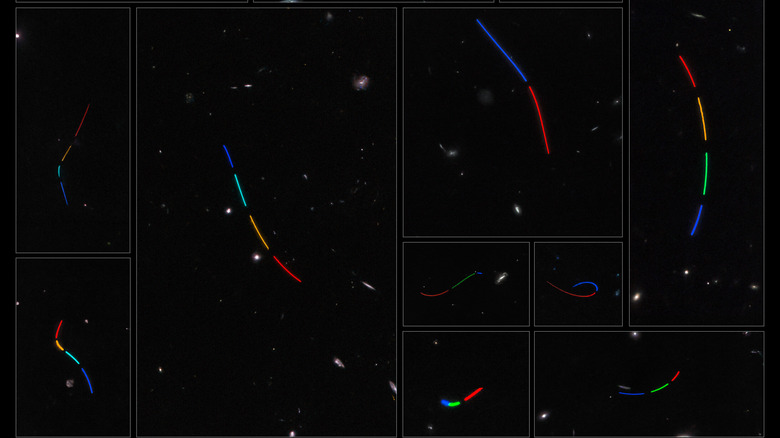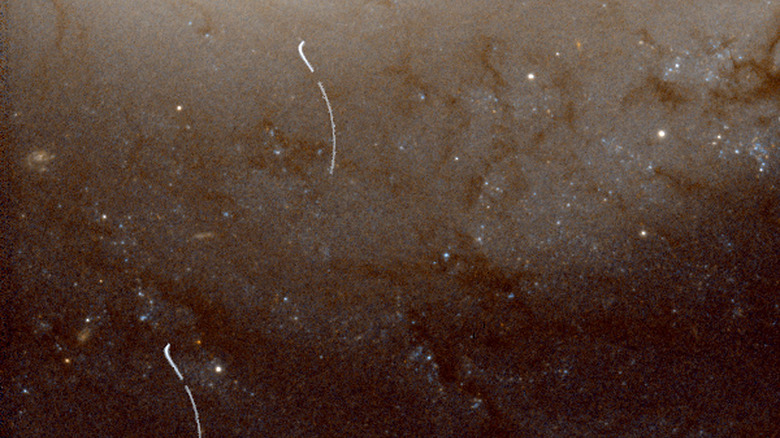How Members Of The Public Helped Hubble Find Thousands Of Asteroids
The Hubble Space Telescope collects an enormous amount of data, and it has an archive stretching back for more than 30 years. That's more data than any individual scientist could study in their lifetime, so to make the most of this incredible scientific tool, Hubble data isn't only analyzed by experts — the public is invited to help, too. In citizen science projects, members of the public are asked to help perform the kinds of tasks that are difficult for computers to do well, such as recognizing shapes. This data can then be fed to machine learning programs to make them better at recognizing the objects in question (via The Conversation).
One such project has been using Hubble data to identify asteroids. Citizen scientists have helped to identify more than 1,700 asteroid trails in data from Hubble's archives, made up of more than 37,000 images (via Hubble).
The project, named the Hubble Asteroid Hunter, was started in June 2019, and the results were released in May 2022. It's not easy to spot asteroids as they only appear briefly in Hubble's view — for roughly 30 minutes — but they leave behind a trail that can be spotted by eagle-eyed members of the public. More than 11,400 people contributed to the project, combing through data taken between April 2002 and March 2021 by Hubble's Advanced Camera for Surveys and Wide Field Camera 3. The public identified more than 1,000 trails, which were then used to train an AI. Between the public and the AI, a total of 1,701 trails were identified.
What's special about asteroid trails?
Asteroids come in all sorts of shapes and sizes, and they can have vastly different orbits around the sun — some having highly elliptical or elongated orbits, and some coming much closer to the sun than others. Around one-third of the asteroid trails identified were already known to scientists as part of a catalog called the International Astronomical Union's Minor Planet Centre, as the ESA explained on its website.
However, this means that two-thirds of the asteroids were entirely new to astronomers. Most are located in the asteroid belt, which sits between the orbits of Mars and Jupiter, where we know many large and small asteroids live. Many of those found in the Hubble data are small and faint and therefore not often studied. Studying asteroids can help astronomers understand more about the early condition of the solar system and how the planets formed.
The next challenge for this project is to try to understand the orbits of these previously unknown asteroids, as well as trying to work out information about their size and rotation. This is hard to do because many of the asteroids were observed so long ago, but not impossible. "As Hubble moves around the Earth, it changes its point of view while observing the asteroid which also moves on its own orbit," Hubble scientists write. "By knowing the position of Hubble during the observation and measuring the curvature of the streaks, scientists can determine the distances to the asteroids and estimate the shapes of their orbits."

